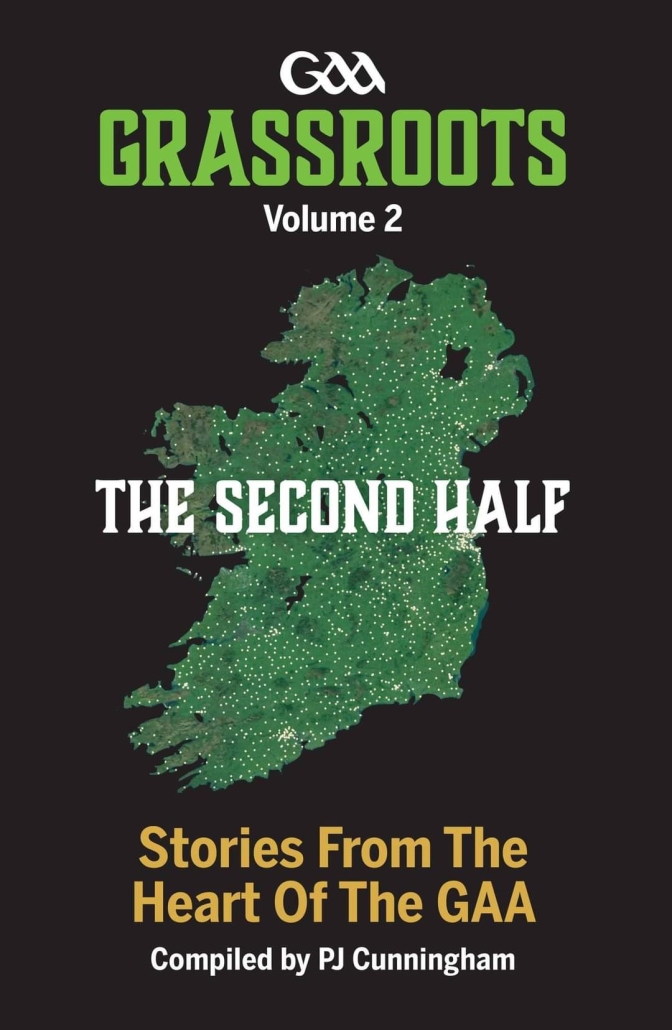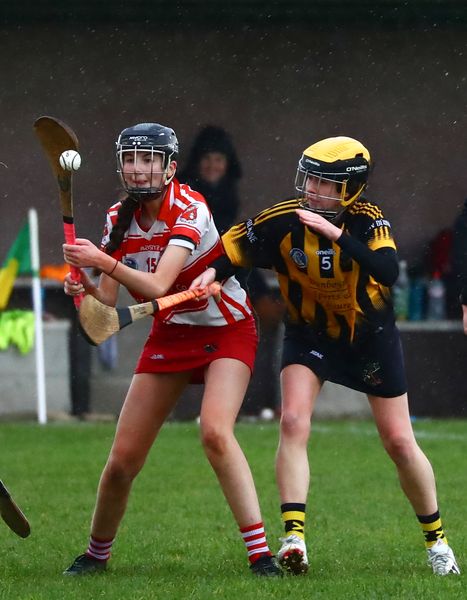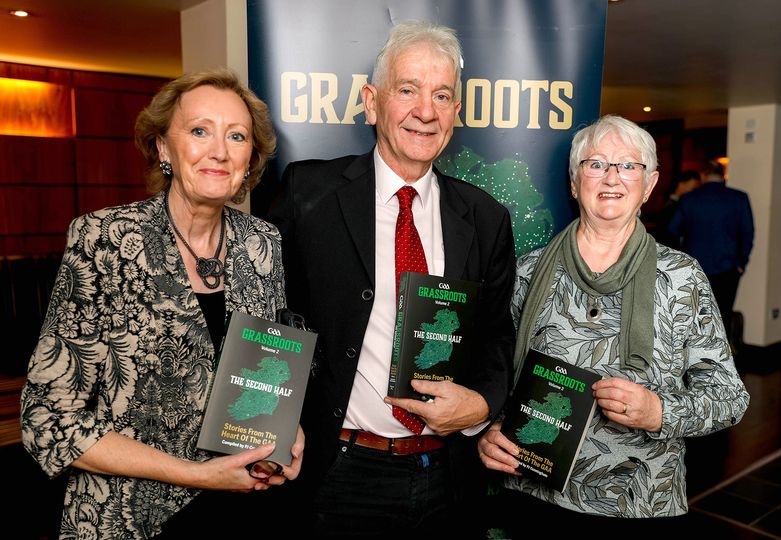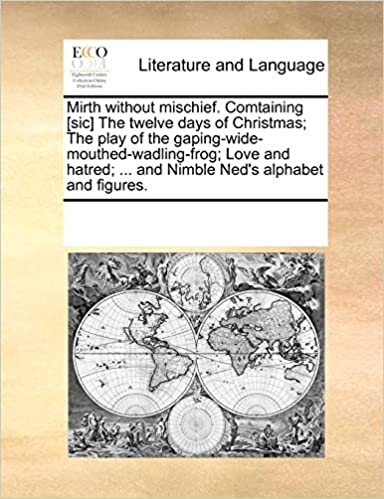A WORD TO THE WISE
John Stewart (below) recorded For Those Who Are Wise with The Kingston Trio more than half a century ago.

I use to sit in the shade of an old cedar tree
and dream of the days, what they’re holdin’ for me.
But all those should know who gaze at the sky.
It’s for those who are wise. It’s for those who are wise.
And the west winds would blow. They’d be singing to me.
They’d say, “Look, you, out yonder, just as far as you can see.”
But all those should know who gaze at the sky.
It’s for those who are wise. It’s for those who are wise.
And the years went their way as the good years will go.
But my dreams linger on in the hills of my home.
And young men should know who gaze at the sky.
It is you who are wise, only you who are wise.
read more : http://lyrics.jetmute.com/viewlyrics.php?id=159516
They (whoever they are) say that everybody has a story to tell. And yet, among those who are Wise, is a lady, Florence, who has told a story to the world, but doesn´t recognise herself as either ´wise´ or a storyteller.
She and her husband, David Wise, spend a lengthy holiday or two each year here on Lanzarote and have become good friends of ours and of these sidetracks and detours pages. David is actually a former football league linesman and, admittedly many years after he had retired, I sat with him in the stands watching a match at UD Lanzarote,…and I didn´t agree with a single decision he made from his prime view high in the stand.
He is now retired and a Spurs season ticket holder, so as a former linesman and as a current fan, he too must be a man with a story to tell and a view of whatever the hell it is that VAR is trying to do. He is, however, also quite reticent when talking about himself. Rest assured, though, we are working on him, and that world exclusive will come !

As soon as I learned from Florence that she had recently seen a short story published in a collection called Grassroots, written by a number of writers and compiled by P J Cunningham, I asked her to complete my serve-all ´five bums at the bar´ interview conducted by my invisible friends, Messrs Who, What, When, Where and Why.
I sent her an e mail as soon as I knew she and David had landed here on Lanzarote again last month.
Hi Florence.
I was really pleased to learn through facebook and occasional e mails that you have become a published writer over the last twelve months. So tell me, and our readers, WHO is Florence Wise, the writer?
WHEN did you first begin to take notice of stories and how has that relationship between you and story developed?.
WHEN did you first begin to look at story as a deice for recording social history?
WHAT is the propose of story, do you think?
WHAT effect do you think the storyteller can have on a story written or previously told by somebody else?
WHEN you listen to stories who´s voice ae you hearing?
WHEN a story is becalmed, is not being read, is out of print, and no longer being r listened to, what happens to that story?
WHERE, geographically, has your writing taken you?
WHERE, spiritually or emotionally, has story writing, or story telling or story reading, taken you
WHY, at a time when news from around the world is instantaneous and available 24 / 7, do people still turn to story?
WHY do stories lodge in our memories.?
Self-deprecating lady that she is, Florence disdained my questions that might have portrayed her as a writer.
I think you might have got the wrong end of the stick to the notion of me being a writer ? I’m not really. I’ll tell you the story……..
Two years ago I saw an invitation from PJ Cunningham who was compiling a book about memories of the GAA (Gaelic Athletic Association) from the grassroots up. The sports involved with the Association are Hurling (men), Gaelic Football and Camogie (women’s hurling). I knew that most of the replies to that invitation would be from men and decided that a memory of women’s participation in GAA sports should not be overlooked.
I’ve always enjoyed history as a subject and to participate in a series of books which creates a history of it’s grassroots members etc. seemed right at the time, to create a history of my mother’s participation in a sport like camogie and, win a cup final medal, will allow extended members of our family a memory. The story won’t die with me, as its keeper.
The memory I had was of my mother, Rosaleen Swan (as she was then) who won a medal in a cup final and who was very proud of her medal. The story goes on and details how the medal was subsequently lost. The editor, PJ Cunningham liked the story and included it in a chapter of the book and included a few photographs I sent with my mother wearing her medal while in Wiltshire and a photo of the team. All way back in the 1930’s..
I asked PJ if he had press releases about the book to hand and he sent me a little piece about the Dublin entries, of which I was one. I’ll attach it so you can see.
There has been serious coverage in Ireland since the launch of the second book in October and it’s hit the shelves in all the major bookstores in Ireland as there are entries from all the Irish counties. Radio and TV coverage and, of course, all Irish newspapers have covered the book’s release and highlighted some of the stories.
Should you decide to do a feature on my chapter it could resonate with many of the Irish who live and visit the island.

David (left) and myself have been visiting the island of Lanzarote for the past twelve years: latecomers by some standards. I love the island and the people and we have made some good friends here [like yourself and Dee) over the years. We also gained a lot from our visits, from viewing the spectacular scenery and visiting our favourite places time and again, to the great food at our local Lanzarotein cafes and restaurants.
As you can see from David, in the photograph, we also enjoy trying out our ever growing Spanish phrases in the hope we will be understood and are so pleased when we pass muster. The health benefits are enormous too, lots of Vit ‘D’ and plenty of walking to keep our joints working.
My history, such as it is…. Born in Garstang in 1941, evacuated to Dublin and stayed there for the next 19 years. Back in the uk, before I retired, I was an Local Government Officer in Economic Development & Tourism. I later bercame Regional Officer for the West Midlands for four of the Brussels MEP’s and then a spell as Administrator of a business forum before finally escaping to join the silver retirees scene.
We also spend time with our caravan visiting places in the UK we might not have seen otherwise and also time on the Continent. You could say we are travellers rather than tourists.
Thanks for the opportunity to give my side of my story but I’m sorry if I gave the impression I was someone of note….
Methinks Florence doth protest too much,….she is a least a prominent footnote on a literary scene on which Goodreads, an on-line site that is writer-and-reader inclusive and informative, as well as a source of literary information. Goodreads is also a site that offers fact and fiction and inspiration and is much used by not-for-profit blogs such as ours here at daily Sidetracks And Detours.
The PJ Cunningham mentioned early in her story by Florence has almost a dozen books on Goodreads that name as author, co-author or collator. Florence once shared a story with him, and I ever do that I will have it chiselled on my grave-stone.
One of PJ Cunninhham´s books, The Long Acre, was reviewed in The Irish Times in April 2015 by Brian Meye.

The Long Acre
Author: PJ Cunningham
ISBN-13: 978 0 9926732 6 0
Publisher: Ballpoint Press
Guideline Price: €14.99
This second volume of memoirs of growing up on a farm in the midlands in the 1950s and 1960s, told in the form of separate stories rather than chronologically, is of the same high standard as PJ Cunningham’s first, The Lie of the Land. The Whip Hand, tells of how a resourceful neighbour managed to fool his wife and feed his drink habit by secretly selling cattle and their best potatoes. Of the three “rebels” in The Unholy Trinity (rebelling against the secular and religious mores of the time), the author’s uncle is the bravest because he has the most to lose. The Robin’s Nest is an uplifting story about the author’s father’s respect for nature even though it meant more hard labour for him and his family. The Last Day of the Ploughman is a moving story of how their father handed down the “sacrosanct” art of horse ploughing to the author and his brother.
I was only very vaguely aware of Mr. Cunningham´s work, and it rang only a very quiet bell when Florence mentioned him, but because she did I researched him and found the above review by Brian Meye. Because I read that review above I have gently placed Mr. Cunninham´s style as being similar to that of Anthony Brady, a writer who also has several novels placed on Goodreads. We met him, also on Lanzarote, and although he lives in the UK he occasionally contributes art and literary reviews to our pages. You will dinf one of his most recent short stories later on this article.

Also mentioned in the response from Florence, of course, was the sport of Camogie, as played by her mother, and cup-final winner Rosaleen Swan.
Camogie (/kəˈmoʊɡi/ kə-MOH-ghee; Irish: camógaíocht [kəˈmˠoːɡiːxt̪ˠ]) is an Irish stick-and-ball team sport played by women. Camogie is played by 100,000 women in Ireland and worldwide, largely among Irish communities.
A variant of the game of hurling (which is played by men only), it is organised by the Dublin-based Camogie Association or An Cumann Camógaíochta.] The annual All Ireland Camogie Championship has a record attendance of 33,154,] while average attendances in recent years are in the region of 15,000 to 18,000. The final is broadcast live, with a TV audience[when?] of as many as over 300,000
UNESCO lists Camogie as an element of Intangible Cultural Heritage. The game is referenced in Waiting for Godot by Irish playwright Samuel Beckett.
The Gaelic Athletic Association (GAA; Irish: Cumann Lúthchleas Gael [ˈkʊmˠən̪ˠ ˈl̪ˠuː(h)xlʲəsˠ ˈɡeːl̪ˠ]; CLG) is an Irish international amateur sporting and cultural organisation, focused primarily on promoting indigenous Gaelic games and pastimes, which include the traditional Irish sports of hurling, camogie, Gaelic football, Gaelic handball and rounders. The association also promotes Irish music and dance, as well as the Irish language.
As of 2014, the organisation had over 500,000 members worldwide, and declared total revenues of €65.6 million in 2017. The Games Administration Committee (GAC) of the Gaelic Athletic Association (GAA) governing bodies organise the fixture list of Gaelic games within a GAA county or provincial councils.
Gaelic football and hurling are the most popular activities promoted by the organisation, and the most popular sports in the Republic of Ireland in terms of attendances. Gaelic football is also the second most popular participation sport in Northern Ireland. The women’s version of these games, ladies’ Gaelic football and camogie, are organised by the independent but closely linked Ladies’ Gaelic Football Association and the Camogie Association of Ireland respectively. GAA Handball is the governing body for the sport of handball, while the other Gaelic sport, rounders, is managed by the GAA Rounders National Council (Irish: Comhairle Cluiche Corr na hÉireann).
Since its foundation in 1884, the association has grown to become a major influence in Irish sporting and cultural life, with considerable reach into communities throughout Ireland and among the Irish diaspora.
So, Florence…….. first of all you led me to author and compiler PJ Cunningham and that led me to a review of his latest compilation by Brian Meye. The review was so well written, succinct and positive. that I made a note to read more of not only Mr. Cunningham´s works but also more of Mr. Meye´s reviews. On looking for more about him on line, I learned he has written in broad strokesabout the likes of revolutionary and trade-unionist Margaret Skinnider and about actor Christopher Eccleston. I will certainly be keeping an eye on his work in future, and hav ing read some of on line for the first time following your piece, I will also certainly find copies of The irshi Times in future.
You mentioned your cup final star mother and the game of Camogie. I looked for information about both but because I didn´t have your mother´s maiden name I didn´t get far there. However, from what then learned on-lined about the Camogie sport she played, I am absolutely certain she is deserbivong of her central role in your contribution to the book It looks and sounds and is spoken of as a pretty tough and physical sport, and she was a winner at the game.

For my part, Florence, you too, are a woman of note because you have presented me and our readers with evidence that American songwriter Hugh Moffat was surely right when he told me once in an interview that ´when we create (art), we must intend it for light years of travel.´
Your little story, nothing of note you say, has been woven into a thread with several others of similar ilk, all telling stories that might have otherwise died. All those, and more, stories are now bound in Grass Roots Part Two, It has been widely reviewed, and those reviews then take further flight to faraway places, with even Sidetracks And Detours reaching into South Korea, Australia, New Zealand, Canada, USA; Spain; The Canary Islands, and The British Isles.
Your story also sent me back to the nineteen fifties in search of that John Stewart song still relevant today.
The more stories we slide through language barriers, the more truths we tell, the more we talk and listen to one another and read the great writers of all nations and look at cultures and listen to tongues´, the more likely it is that these stories will indeed travel for light years and become a source of wisdom.
Florence Wise is, of course, a person of some note, not only for having written a story that will help preserve a legacy, but for many other reasons too, we´re sure !
The story Florence submitted to Grass Roots was, a factual one about her mother´s sporting prowess and was relatively self-explanatory, but there are of course stories that are more difficult to follow many of which we might think we fully understand, but actually might not !
MeanwhileAlex Hopper, writing recently in American Songwriter, says that even the seemingly most simple of songs, even the songs of Christmas, can have a background that is often overlooked.
Christmas songs, Hopper suggests, can be as taxing as “Twelve Days of Christmas.” If caroling is not your thing, by the time you start singing about five golden rings you’re likely begging for the song to be over. Whether you love it or hate it, no one can deny “Twelve Days of Christmas” is a holiday staple.
This song dates all the way back to the 1780s. The lyrics don’t hold much stock in modern times but when given the song’s rich history, the strange assortment of gifts (364 in total) can begin to be put in context.
Behind The Meaning
In Christianity, the 12 days after Christmas are called the Twelvetide of Christianity. According to Biblical scholars, these days represent the time between Jesus’ birth and the arrival of the Three Wise Men. Though that period of time is where the song gets its title, the deeper meaning behind this song is still a little murky.
Some historians have clung to the theory that this track was written during a time when practicing Christianity needed to be on the down low for fear of being punished. The “gifts” mentioned in the song were used to represent the Twelvetide of Christianity without expressly naming anything that could be tied back to the religion.
According to this theory:
1. The partridge in the pear tree represents Jesus Christ
2. The turtle doves are The Old and New Testaments
3. The French hens are the theological virtues of Christianity: faith, hope and charity
4. The calling birds are the four gospels
5. The golden rings are the first five books of the Old Testament
6. The geese a-laying are the days of creation
7. The swans a-swimming are the seven sacraments
8. The maids a-milking are the eight beatitudes
9. The ladies dancing are the nine Fruits of the Holy Spirit
10. The lords a-leaping are the Ten Commandments
11. The pipers piping are the eleven faithful apostles
12. The drummers drumming as the twelve points of doctrine in the Apostle’s Creed.
However, others have pointed out the caveat in that theory: if they couldn’t sing about Christianity how were they able to mention Christmas in every line? If 1700s lyrics did not mention Christmas specifically, then the “hidden meaning” theory may hold some weight, if not, then we may never know what inspired these lyrics—forever obscured by time.
Origins

The first printed appearance of the song was found in the English children’s book Mirth With-out Mischief, though the lyrics have gone through some changes since. For example, the “four calling birds” were once “four colly birds” and the partridge was a “very pretty peacock upon a pear tree” – etcetera, etcetera. The version we all know today was composed by Frederic Austin in 1909.
Historians believe this version of the song started its life as a memorization game for English school children. When it was their turn they would add their own verse to the song before trying to remember all the verses that came before.
How Much Would “Twelve Days of Christmas” Cost?
Since 1984, PNC Bank has been tracking the price of each gift mentioned in the song. This year, all those pipers, swans lords, and ladies would run you $45,523.27.
Comparatively, in 1984 your true love could leave all 12 days’ worth of goodies under the Christmas Tree for $20,069.5. Who would have thought that a Christmas song could be used as a tool to track the rising cost of things like housing, food, clothing, and transportation?
A storyteller of a very different kind is a man we mentioned earlier in this piece. Tony Brady is an excellent writer and like story-teller Florence Wise, usually preserve pieces of historical importance and so we are delighted to close this article with one of his recent stories, that came to us attached to an e mail from his ´ambrose beadyeye´ address. It is actually set very much in the here and now, and takes a wry look at the entanglements of political correctness.
Mr. Brady is something of a globe-trotter but since we last saw him on Lanzarote earlier this year he has had a fairly tough time. His e mail explained that he endured a severe dose of Covid-19 and self-isolated for 10 days. Fortunately, the fridge was well stocked and despite the absence of champagne and caviar I lived to tell about my agony, down the pub, for all willing to listen. In early December I was well enough to travel to Co.Fermanagh for a seven day visit to loved ones and link up once more with the local Fermanagh Writers. Thanks to you ventilating my recent essays they were featured in Corncrake Quarterly for autumn 2022.
The story Tony sent over is reproduced below but remains the © of the author and may not be further reproduced without his permission.

A Christmas Story… One I was dared not to write…by Tony Brady (right)
Prologue:
“Christmas is a magical time for children both young and old. Professional Santas bring that spirit of joy and excitement and keep your senses tingling all through your visit – even if that visit is just a short one. Santa-School trained Santas, Mrs. Claus’, elves and even live reindeer, will create lasting memories for customers and clients.”
Santa Training Brochure.
“Shan’t be seeing you next year. A Happy Christmas..”
Ex-travelling fairs showman Stan Still, smiled as he handed me my payment, plus bonus, for the annual three week stint as Santa Claus in the Giggleswell town shopping Centre. He always paid me in cash to avoid VAT. The elves were paid off by their agency: The National Elf Service. A couple of the little people were homeless and were sponsored by a local charity shelter: Give a Gnome a Home. “There will be changes, mind you, I’m retiring and a new style of management is planned. This is all going..” – Stan gestured towards the portable grotto being dismantled.
None too soon, I thought. The faded pantomime theatre scenery flats had been salvaged some year’s back and badly needed a makeover. More grot than grotto. During the few weeks in situ the graffiti: such as ‘kil santa’ and ‘santa must dy’ had been painted over most days. “Rebels without a Claus…” muttered Stan.
It was at times like this that the manager reviewed my performance. As usual, some customers had complained: “Father Christmas was grumpy; his breath smelled of alcohol; his beard was tobacco stained; he swore at the elves..” and so on. “You could have been more diplomatic when the SAS protest about your sealskin wellies took place. Threatening to personally shoot a polar bear outside nearby Iceland caused nothing short of a riot led by irate supporters of Save All Seals.” The FFWS demo was worse. Your notice offering support to Feminists For Women Santas, “so long as they wore fur lined skimpy outfits,” closed the shopping centre for hours.
In parting, Stan mentioned that a customer service survey had been carried out by a management consultancy and that I would get the results in due course. “By the way, put some weight on – some of the kids are fatter than you! All the best for the future. Enjoy your boar culling jaunt in the Forest Of Dean.”
I did not have to wait long. In early January a letter signed by Trina Forest CEO of Wayne-Dear Enterprises Inc., arrived inviting me to a workshop for new entrants on the “retained list” for Santa’s next Christmas programme. Air tickets and expenses claim documents were enclosed for a 2 week stay in the company’s outreach training centre in Lapland. In the same mail delivery, was a large packet accompanied by a letter signed by none other than Lord Rupert Baron-Waistes of Floppbenbury.
“Now see here…” the letter started with almost an aristocratic sneer, “You cannot go around threatening wildlife..” continuing “..that is my job!” It concluded with instructions to go and read up on the legislation set down by his ancestor back in 1066. At that time his liege, the new King William, provided him with a huge tract of land despite the fact that it had belonged to someone else. Also in the package was a lump of meat which the sender was using as a sort of Christmas sample of his own output. The letter had an order form attached, with discount terms applicable if I took the whole beast.
“Looks like venison to me” I said, as I laid it on the counter of my local butcher. Biff Wellington stared at it. “Dear, dear it’s not deer, it’s reindeer. Not much call for it round here. Mind you, a couple of migrant workers came in recently and enquired if I sold it? They were from Finland – working on the Christmas Brussells sprouts harvest.” Heeding Biff’s advice to take it home and mince it, I added herbs, pickled onions with chillies, opened a bottle of wine and relished a reasonable evening repast.
I must have been on my fifth glass of wine when I recalled one of my many ex girl-friends, what’s her name? Baroness Holly Tickell-Bushe, Heidi Clare, Anna Conda, Barbara Seville, Bonny Ann-Clyde, Constance Norring? Yes. Her. She was researching her family tree one time and found a connection with the aristocracy. Overnight, she put on the airs of regal refinement. Very soon, she was dressing in an ermine fringed velvet cloak and shopping in Tesco, wearing a tiara. Things came to an abrupt end when Constance decided to go off with a Peer of the Realm (and polar explorer) she met through the internet. Hence, I guessed, the provenance of the reindeer meat.
Months passed and soon it was time to fly to Lapland for Santa Claus training. I had completed all the requirements of the job specification: the most important being the national police check. No criminal record was the result. Two road traffic violations: jumping a red light in Shepherds Bush, London (1978) and speeding near Enniskillen – clocked at 31.05mph in a 30mph zone (1989). Guilty pleas by post and cheque noted. Sleigh driving not excluded.
The training syllabus – as stated – will cover the history of Santa, voice training, costumes, make-up, role-play, NCC (non-child-contact), customer/parent empathy strategies and reindeer management. The school will include training candidates from throughout Scotland and the North of England, all keen to develop their skills. Emphasis on gender and ethnic diversity will characterise all tutoring. Situated near the city of Sodankyla it is home to Luosto, which is a ski and safari resort in the heart of the national forest that specialises in authentic Husky, Reindeer, Skidoo and Santa excursions. Sodankylä has an airfield.
The training was completed except for reindeer training and everyone obtained the required qualification. My room-mate – Nelson Kasavubu – was returning to his country to be its first black Santa in The Congo. A party of extremely serious students was departing heading for home in Wuhan, China. I was great mates with Sum Ting Wong, Wa Shing Ka, No Pah King, to mention just a few. I noticed they were coughing, sneezing, feverish. Even worse, they complained they could not smell nor taste the special Christmas Pudding I made for them in the spirit of international fraternity.
The right type of reindeer was not available. The genetically modified specimens (sans antlers) being bred to comply with global health and safety requirements, were still not out of the experimental stage. The last day was planned as a mystery excursion into a winter wonderland.
Epilogue:
A news item from The Giggleswell Mercury.
A popular Father Christmas and regular sight in the Giggleswell Shopping Centre was involved in a fatal accident in Lapland in the run up to the Christmas season. He was returning from judging a snowman/snowwoman competition when the snowmobile he was riding over a frozen lake crashed into a polar bear. The conveyance burst into flames melting the ice and resulted in his tragic death.
© Tony Brady
My former all across the arts partner, Steve Cooke, who took over the reins of that organisation when I retired here to Lanzarote seven years ago to launch Sidetracks And Detours, also now manages a project called Stories We Could Tell, often gathering tales from aspirant writers. There is a connection between that project title and The Everly Brothers, but that is a story for another time !
Sidetracks & Detours will return with its daily blog of more stories we could tell, Monday through Friday. throughout 2023.
So, we wish all our readers around the world a Merry Christams and a Happy New Year and will see you again on Monday 26th December 2022.




Leave a Reply
Want to join the discussion?Feel free to contribute!